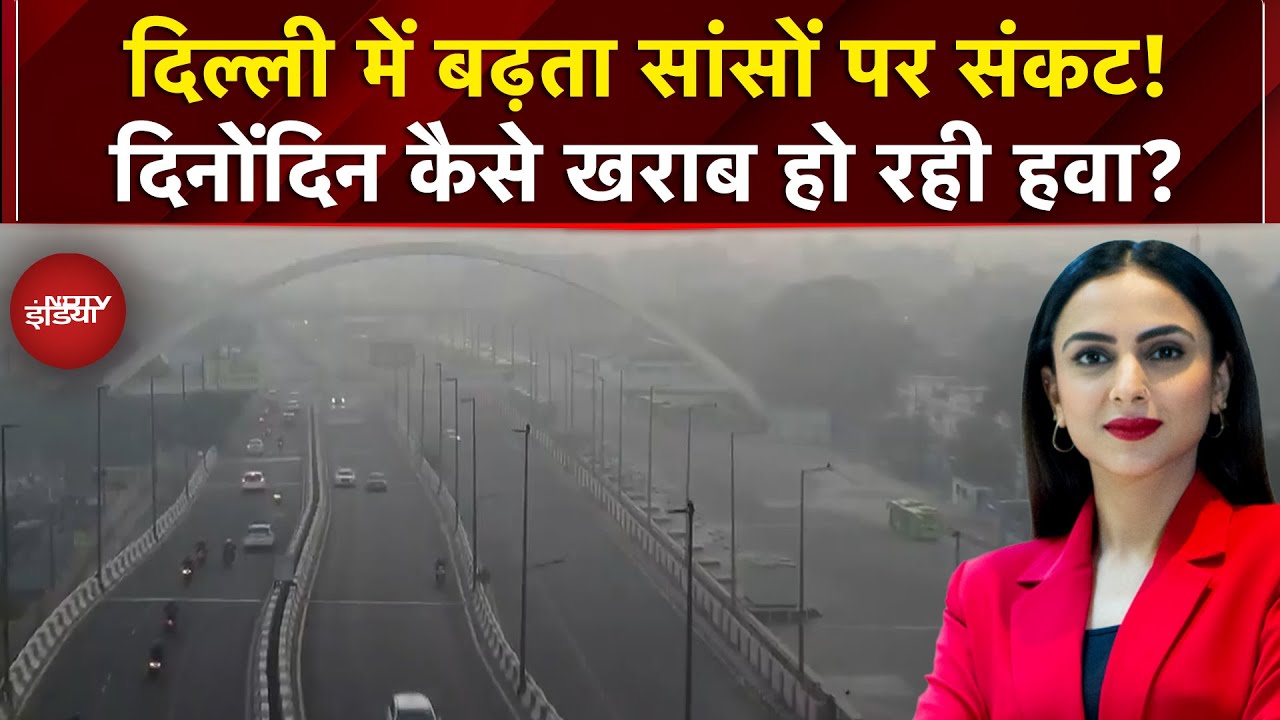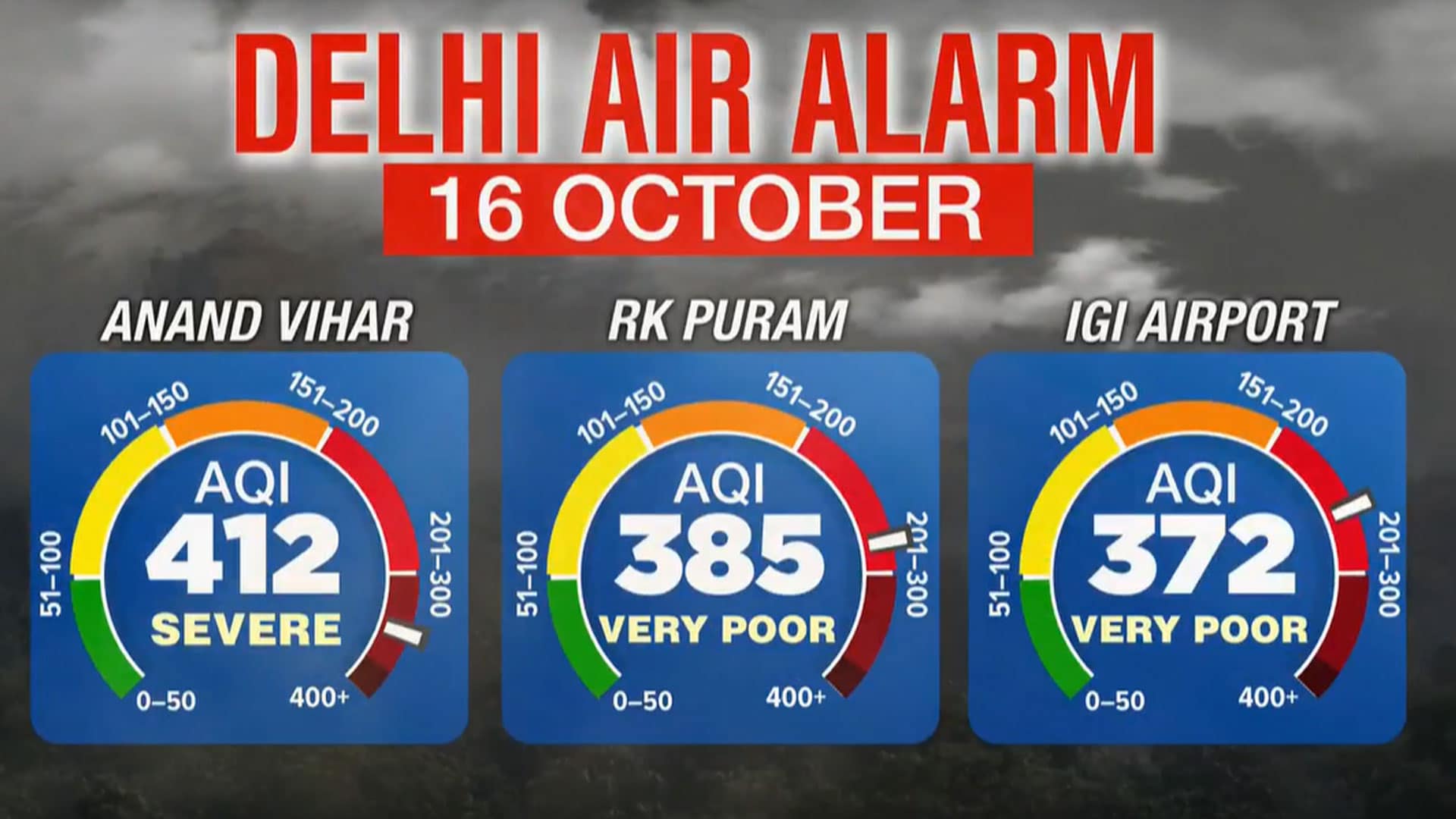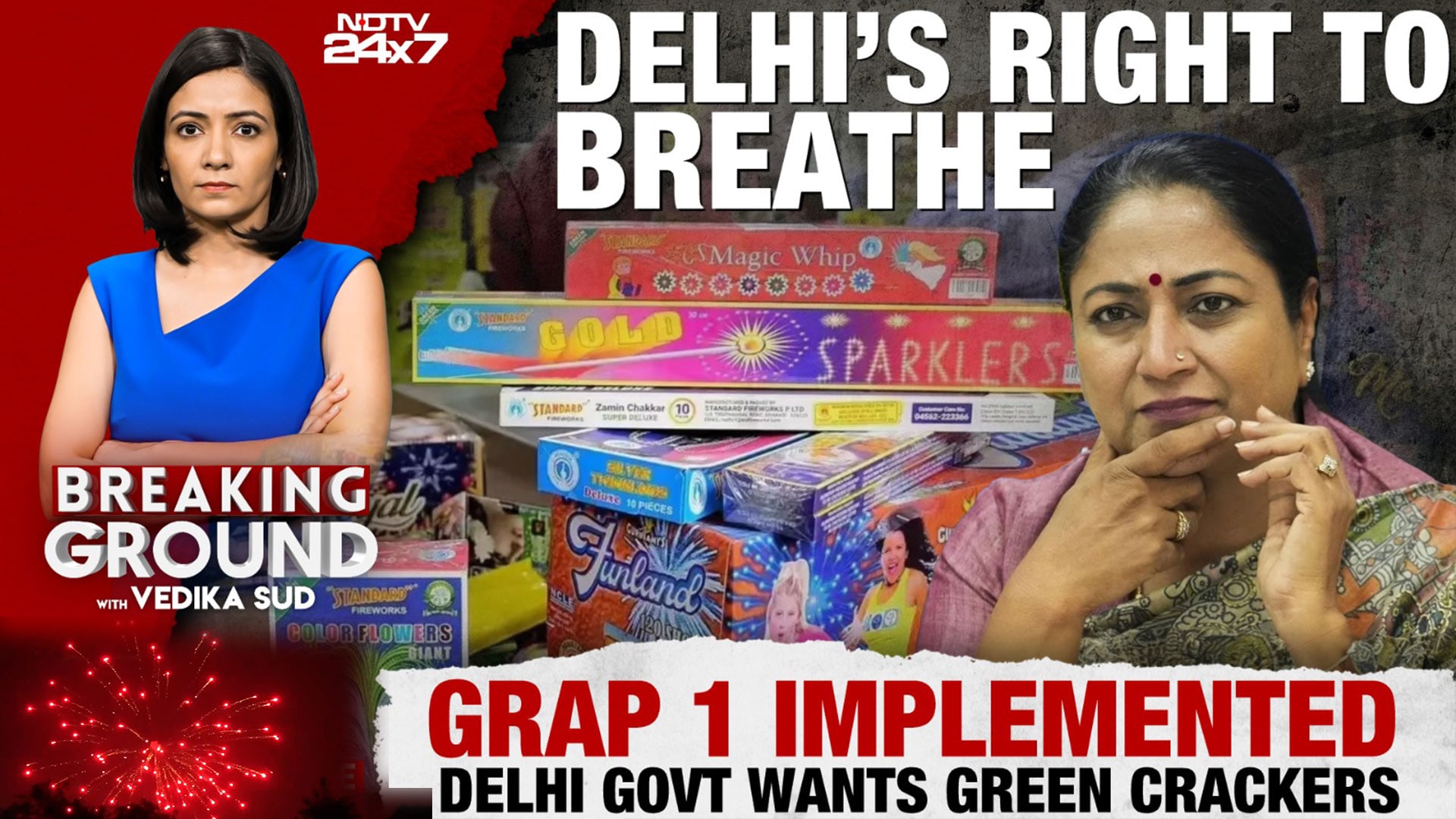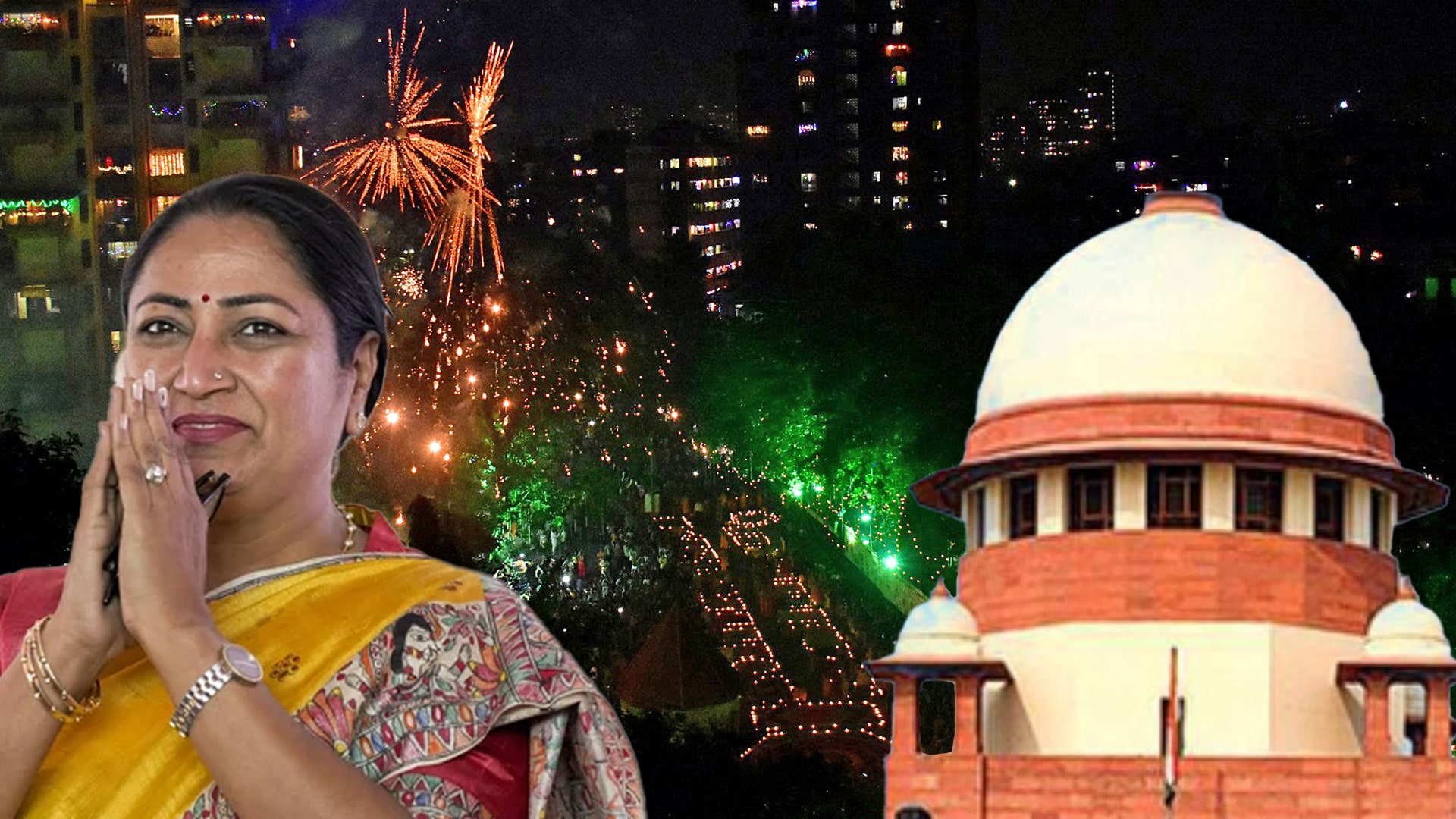- Home/
- "Should Delhi Even Remain Indian Capital": Shashi Tharoor On Air Crisis
"Should Delhi Even Remain Indian Capital": Shashi Tharoor On Air Crisis

Senior Congress leader Shashi Tharoor on Monday questioned whether Delhi should remain the Indian capital as the city's worsening toxic smog surged past 60 times the World Health Organization's recommended daily maximum.
A thick layer of smog - a toxic blend of smoke and fog - has been enveloping the Delhi-National Capital Region (NCR) for the past few days with the air quality index (AQI) plummeting to the "severe-plus" category, forcing authorities to switch schools to online classes and invoke strict pollution control measures.
"Delhi is officially the most polluted city in the world, 4x hazardous levels and nearly five times as bad as the second most polluted city, Dhaka. It is unconscionable that our government has been witnessing this nightmare for years and does nothing about it," Mr Tharoor posted on X.
The Congress MP said he has run an Air Quality Round Table for experts and stakeholders, including MPs, since 2015 but "gave up" last year because "nothing seemed to change and no one seemed to care".
"This city is essentially uninhabitable from November to January inclusive and barely livable the rest of the year. Should it even remain the nation's capital?" Mr Tharoor added.
Delhi is officially the most polluted city in the world, 4x Hazardous levels and nearly five times as bad as the second most polluted city, Dhaka. It is unconscionable that our government has been witnessing this nightmare for years and does nothing about it. I have run an Air… pic.twitter.com/sLZhfeo722
— Shashi Tharoor (@ShashiTharoor) November 18, 2024
Delhi and the surrounding areas, which are home to about 7 crore people, consistently tops world rankings for air pollution in winter as cold air traps dust, emissions and smoke from illegal stubble burning by farmers in neighbouring states of Punjab and Haryana to clear their fields for ploughing.
Pollution Chokes Delhi, AQI Nears 500-Mark
A thick blanket of smog continued to grip Delhi and its adjoining areas this morning as the AQI nearly touched the 500-mark.
According to the System of Air Quality and Weather Forecasting and Research (SAFAR) data, the national capital's overall Air Quality Index (AQI) was recorded at 494 at 6 am, the worst so far this season, which officials said was due to "unfavourable" meteorological conditions.
#WATCH | Delhi: Kartavya Path and surrounding areas covered in a layer of smog as air quality in the city remains in 'Severe' category, as per Central Pollution Control Board. pic.twitter.com/80mK0nCkBq
— ANI (@ANI) November 19, 2024
An AQI between 0 and 50 is considered good, 51 and 100 satisfactory, 101 and 200 moderate, 201 and 300 poor, 301 and 400 very poor, 401 and 450 severe, and above 450 severe-plus.
The Centre's air quality panel on Monday invoked stricter pollution control measures for the Delhi-NCR under Stage 4 of the anti-pollution plan Graded Response Action Plan (GRAP). This is in addition to the preventive actions announced under Stage 1, Stage 2 and Stage 3 of GRAP already in force.
The GRAP for Delhi-NCR is divided into four stages of air quality: Stage 1 for "poor" air quality (AQI ranging from 201 to 300), Stage 2 for "very poor" air quality (AQI from 301 to 400), Stage 3 for "severe" air quality (AQI from 401 to 450), and Stage 4 for "severe-plus" air quality (AQI above 450).
The panel - Commission for Air Quality Management (CAQM) - also urged the public, particularly children, senior citizens and those with respiratory, cardiovascular, cerebrovascular or other chronic diseases, to stay indoors.
also read
Latest Stories
- Asian News International | Saturday October 18, 2025 , New Delhi
The Air Quality Index (AQI) around Akshardham was recorded at 230, in the 'Poor' category, in Delhi this morning as per the Central Pollution Control Board (CPCB).
- Press Trust of India | Friday October 17, 2025 , New Delhi
Delhi's air quality remained in the 'poor' category for the fourth consecutive day on Friday as the city continued to reel under rising pollution levels in the run-up to Diwali.
- Written by Shreya Goswami | Saturday October 18, 2025
As pollution levels rise across Indian cities, understanding what Air Quality Index (AQI) numbers mean is key to protecting your health.
- Reported by Ishika Verma | Friday October 17, 2025 , New Delhi
Delhi's winter anti-pollution plan for 2025-26 is now active, with authorities stepping up measures across dust control, vehicles, construction, industry, waste, and stubble burning as the city braces for seasonal pollution.
- Written by Manya Singh | Thursday October 16, 2025
Diwali celebrations lead to air pollution due to the burning of crackers and the climactic change. Read on as we discuss impact of high AQI on health and how to stay safe.
................................ Advertisement ................................
Latest Videos
Opinion
Opinion | Why Indians Have Just Given Up On Air Pollution CrisisTanushree Ganguly
Friday December 20, 2024While some may argue that people in Delhi are now more aware of air pollution than they were a decade back, my rebuttal would be that awareness does not mean that people are concerned.
Opinion | You Must Outrage Over Filthy Air More Than Once A YearJyoti Pande Lavakare
Tuesday December 10, 2024Delhi welcomed us with monsoon rains and mangos. We were home. Fast forward a couple of years, in the winter of 2012, I found myself in denial about something other parents, mostly expats, were calling toxic air.
Opinion | Delhi's Air Pollution Situation Is Like A Bad MarriageNishtha Gautam
Friday November 22, 2024On a good day, such as today, the AQI reading in Delhi is 407. We are jubilant at the sickly sunshine trickling through the slightly dissipated smog. At least its not 1600.
दिवाली... पराली... सियासी जुगाली!Ashwini kumar
Monday November 18, 2024दिल्ली-एनसीआर में प्रदूषण का समाधान तो आज तक मिला नहीं. हर साल चिंतित होकर हम-आप सांसों की तकलीफ के साथ-साथ दिल और ब्लड प्रेशर के मरीज भी क्यों बनें?
घर में कैद बुजुर्ग और हांफते लोग, दिल्ली की सांसों में घुला ये कैसा रोग?Nidhi Kulpati
Friday November 08, 2024हमारी हवा जहरीली हो रही है. गुरुवार की शाम को जब मैं इस मुद्दे पर लिखने बैठी तो AQI लगातार 400 पार जाकर दम घोंट रहा था. बहुत लोगों को यह मामला बोरिंग लगे, लेकिन जब आप अपने साथ काम करने वालों को खांसते-हांफते देखते-सुनते हैं, तो चिंता होने लगती है. सुबह उठते ही दरवाजे खिड़कियां खोलने के लिए डॉक्टर मना कर रहे हैं. बड़े बुजुर्गों के लिए तो मॉर्निंग वॉक बाहर की दुनिया से सीधे संपर्क का ज़रिया है, लेकिन डॉक्टर इसकी भी मनाही कर रहे हैं.

















